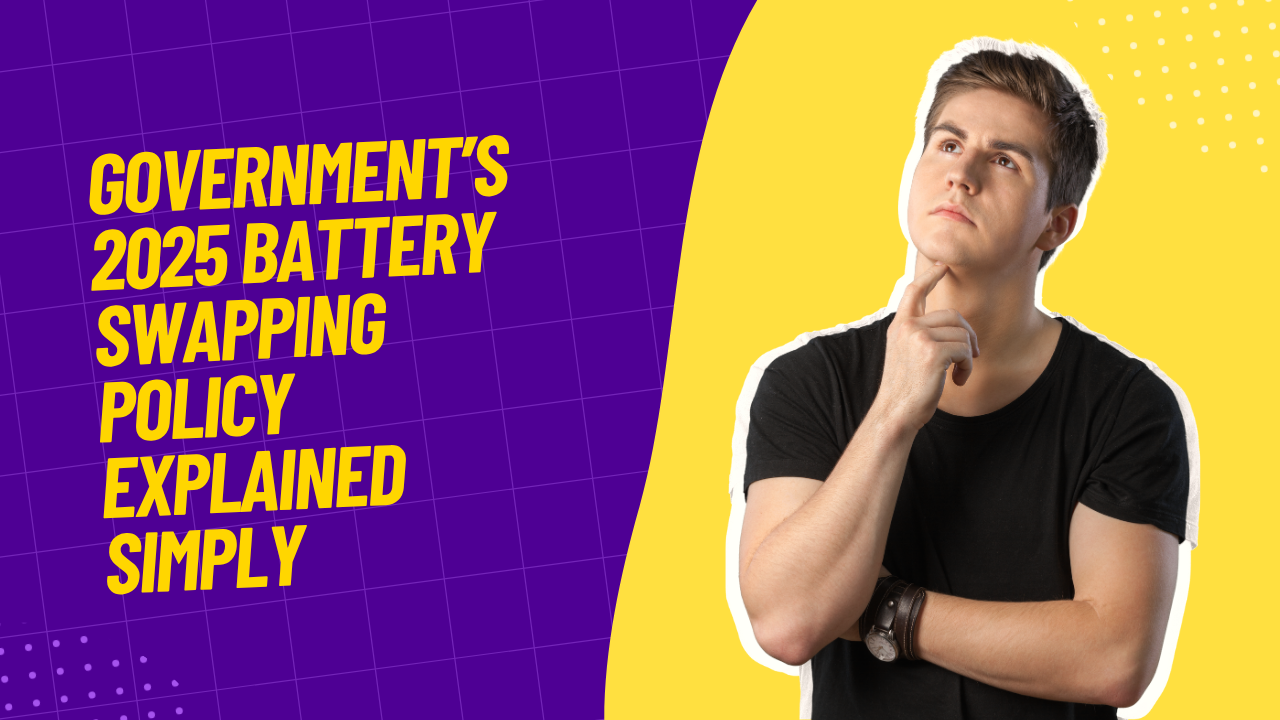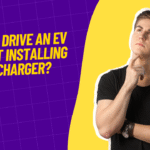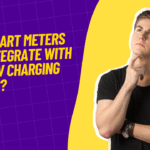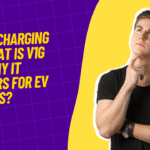In 2025, the Indian government unveiled a comprehensive battery swapping policy designed to revolutionize electric mobility, especially for two- and three-wheelers. Aiming to tackle range anxiety and reduce upfront EV costs, the new framework supports business models, technical standards, and consumer incentives. For everyday riders, this means faster travel with minimal wait, convenient refills, and lower ownership overheads.
In this article, we break down the entire policy in plain language: what it includes, how it works, who gains, and what challenges remain. We arm you with actionable insights to understand why 2025 is a pivotal year for swapping-enabled EVs in India.
Why Battery Swapping Matters?
Battery electric vehicles (BEVs) often depend on time-consuming charging methods—home plugs or public DC fast chargers. For commuters, delivery fleets, and cab networks, waiting 30–90 minutes per charge disrupts efficiency.
Battery swapping solves this by standardizing removable battery packs that can be exchanged in under five minutes. Benefits include:
- Zero downtime: ride in, swap out, ride again
- Lower ownership cost: own vehicle, not the battery
- Enables lightweight, low-cost vehicles: smaller batteries reduce cost
- Improves grid management: batteries can charge off-peak
- Fleet-friendly model: ideal for delivery services and public transport
Recently, startups and aggregators have deployed pilot battery swap networks. The government’s new policy gives them a regulatory and financial scaffold to scale nationwide.
Core Elements of the 2025 Policy
1. Standardization & Compatibility
- Uniform battery design guidelines: Swappable packs must follow common form factors (voltage, capacity, weight) so any station can serve any vehicle under the standards.
- Interoperability norms: Batteries from Manufacturer A must work in vehicles from Brand B, provided they meet the defined technical ladder.
- Certification compliance: All battery packs and swapping stations need approval by DHI (Department for Heavy Industries) or BIS (Bureau of Indian Standards), ensuring safety and reliability.
2. Financial Incentives & Subsidies
- EV buyer subsidy: ₹20,000 per vehicle if the vehicle supports swapping and uses a certified battery.
- Swapping station support: Up to ₹5 lakh grant per station to offset land, installation, and charger costs.
- OEM incentive: Manufacturers using locally sourced battery packs get preference in government fleet tenders and state EV schemes.
3. Business Model Support
- Multiple models are supported:
- Battery-as-a-Service (BaaS): Buyers pay for per-swap access, not battery purchase.
- Subscription: Regular riders can subscribe monthly and swap freely.
- Hybrid models: Owner keeps minimal battery onboard and uses swap for long rides.
- Government allows zonal licensing for swap operators, enabling overlapping networks across cities without monopolistic regulation.
4. Infrastructure Planning
- Target of 1,00,000 swapping stations by 2028—mostly in urban hubs, highway corridors, logistics depots.
- Integration with FAME 3 scheme to provide land or capex support.
- Inclusion in smart city projects for multimodal hubs at metro stations and transport stands.
5. Quality Control & Safety
- Mandatory battery tracking via QR code and blockchain-based serial numbering.
- Stations to have fire safety systems, thermal monitoring, and offline UPS for safe handling during failure events.
- Periodic battery health audits to ensure each pack is safe and efficient.
Who Benefits and How?
Electric Two-Wheeler Owners
- Primary beneficiaries of swapping due to large volume in urban and semi-urban India.
- Scooter riders gain convenience identical to petrol, reducing range anxiety and wait time.
- Small-scale riders (e.g., gig workers): Swap reduces downtime, increases daily earning potential.
- Upfront cost drops if buyers opt for the BaaS model rather than buying the battery.
EV Manufacturers (OEMs)
- Their EVs qualify for swap-compliant bonus subsidy, improving affordability.
- Local battery partnerships become vital; OEMs gain preference in government tenders.
- Interoperability expands their potential addressable market—one platform powers multiple brands.
Swap Station Operators
- Benefit from upfront capex grants and operating revenue from per-swap or subscription models.
- Can act as grid-stabilizers by charging packs in bulk during off-peak hours.
- Partnership opportunities arise to colocate at petrol stations, malls, and public transport hubs.
Fleet & Delivery Operators
- Swap infrastructure enables fleet operations (taxis, rickshaws, delivery bikers) to run 24/7 without charging delays.
- Lower TCO (Total Cost of Ownership) as they don’t buy batteries; drive down running cost dramatically.
- Better asset utilization, smoother shifts, and easier maintenance schedules.
Policymakers & Grid Operators
- Policy incentivizes grid-friendly charging—swap stations recharge batteries slowly off-peak.
- Data from swap logs helps regulators monitor EV usage and plan power infrastructure.
- Helps achieve carbon emission targets by accelerating EV adoption.
Interactions with FAME 3 and State Schemes
The battery swapping policy complements FAME 3 by:
- Adding ₹20,000 extra to the existing central purchase incentive for compliant vehicles.
- Swapping station grants can be combined with FAME 3 capital support for full funding.
- State EV schemes can further top-up the subsidy or provide land lease support for swap station deployment.
- Encourages local governments to shape zoning norms to support swap stations, even in residential societies.
Together, these build a holistic support environment rather than piecemeal incentives.
Challenges and Safeguards
Despite the promise, there are hurdles to tackle:
Technical Interoperability
- Designing a universal battery pack for varied scooters and battery capacities is complex.
- The government plans a technical standard body—including OEMs and operators—to drive certification.
Infrastructure Roll-Out
- Locating new stations in dense urban areas requires land zoning reforms.
- Logistical coordination is challenging: battery transportation, timely availability, monitoring.
Battery Lifecycle Management
- Used batteries must be tracked and recycled responsibly.
- Policy mandates battery health audits and recycling obligations for operators.
Cost Viability
- Swap station needs minimum throughput (200–300 swaps/day) to cover OPEX.
- Authors plan “anchor tenants” like gig hubs and delivery fleets to guarantee early usage.
Overall, these measures aim to make the ecosystem commercially sustainable and consumer-safe.
How You Can Use Swapping in 2025?
Step 1: Choose a Swap-Compatible EV
- Look for variants from Hero, TVS, Ather, Okinawa, Ola that meet swapping standards.
Step 2: Decide on Ownership Model
- Buy the battery with your scooter (traditional ownership).
- Opt for BaaS — pay per swap, or subscribe monthly for unlimited use.
Step 3: Register on Swap Station Network
- Every swap station app provides real-time battery availability and swap logs.
- Check if your EV qualifies and register before use.
Step 4: Swap & Ride
- Simply ride to the station, scan QR code, remove your depleted battery and install a fully charged one.
- Pay per swap or access through prepaid/subscription mechanism.
- All batteries are certified and safety-checked.
Step 5: Give Feedback
- Operators must report battery stats via QR traceability.
- Consumers can raise safety and performance feedback directly through the app.
Real-World Example: Swap in Action
Let’s say you own a TVS iQube switch-compliant model:
- You begin a city ride with your battery.
- Ride ~60 km; head to the nearest station.
- Pay ₹20 for the swap or redeem from ₹499/month unlimited prepay.
- Rider picks up charged battery in under 5 minutes—back on the road.
- Behind the scenes, the station charges the swapped battery off-peak, performs safety checks, logs serial data, and readies it for reuse.
Effectively, your ride mimics a petrol experience—without the petrol.
FAQs
Q1. What vehicles qualify for swapping under the 2025 policy?
All two-wheelers and three-wheelers that adhere to standard battery form factors, certification by DHI/BIS, and interoperability guidelines. Models from established EV makers like Hero, TVS, Ather, Okinawa, Ola are already aligning or expected to qualify soon.
Q2. How much subsidy does the government offer per vehicle?
Buyers get an extra ₹20,000 per swap-compatible vehicle on top of existing FAME 3 incentives. Swap station operators can also get up to ₹5 lakh per station.
Q3. Can I keep my battery if I want?
Yes. Battery purchase is optional. You can buy full-ownership or use BaaS/subscription models where the battery remains with the operator and you pay per swap or per month.
Q4. How safe is swapping compared to charging at home?
Safety is a major focus. Certified packs undergo thermal sensors and protective housing. Stations are equipped with fire extinguishers, trained personnel, and regular audits.
Q5. Are swap stations available everywhere?
Not yet. The rollout starts in metro zones and highway corridors, aiming for 100,000 stations by 2028. You can check apps to find the nearest ones and plan commutes accordingly.
Q6. How will swapping affect battery lifespan?
Operators track battery cycles and retire them once capacity drops below certified levels, typically 70–80%. Regular battery audits help maintain safety and performance.
Q7. Does this policy complement fast charging?
Yes. Swap is aimed at high-frequency, hassle-free usage. Fast charging still serves longer rides and non-compatible vehicles. Both strategies work together to build a robust ecosystem.
Q8. When will swapping stations expand to rural areas?
Later phases include pilot rollouts in tier‑2/3 towns, district HQs, and delivery hotspots. Rural expansion aligns with FAME 3 infrastructure objectives and zonal licensing.
Conclusion
India’s 2025 battery swapping policy marks a transformative step away from conventional charging toward a fast, flexible, user‑centric EV model. By combining standardization, subsidies, safety norms, and interoperability, the policy sets the stage for a scalable swapping ecosystem. For commuters, electric fleets, and EV entrepreneurs, this means unprecedented convenience and cost-efficiency.
If you’re planning to buy an EV this year, look for swap-enabled models. If you run a delivery fleet or ride-hailing service, partnering with swap operators could drastically improve uptime and profitability. For everyone, the payoff is clear: quicker rides, less grid strain, and electric freedom—not bound by plugging in.










